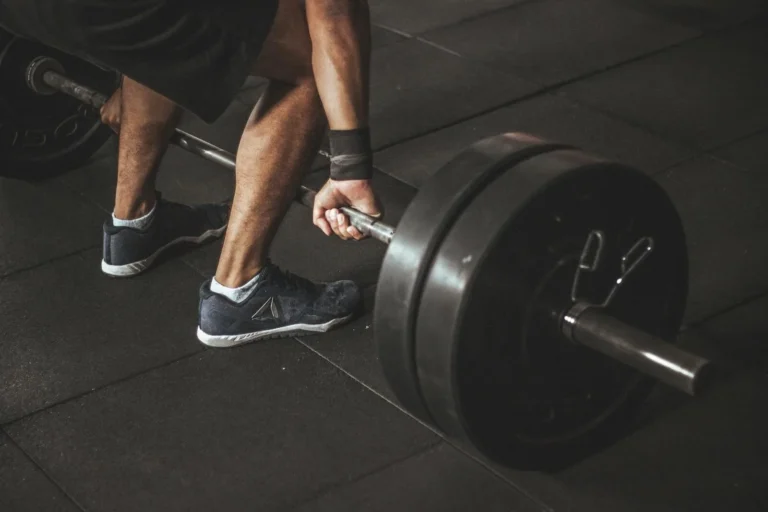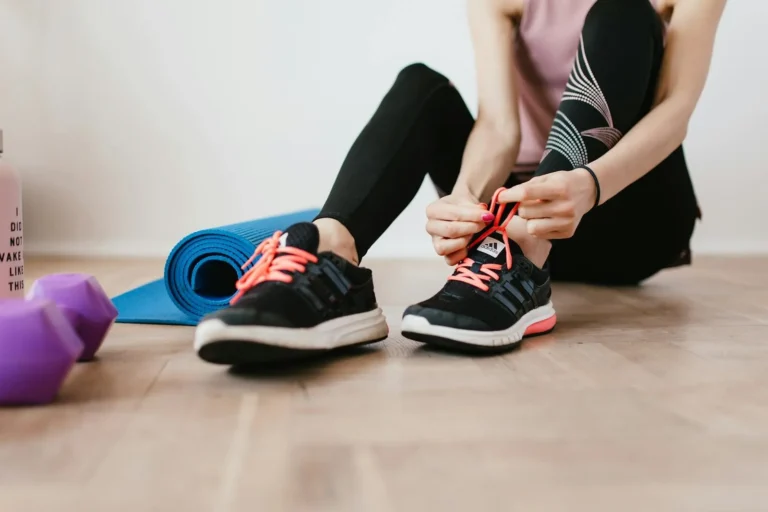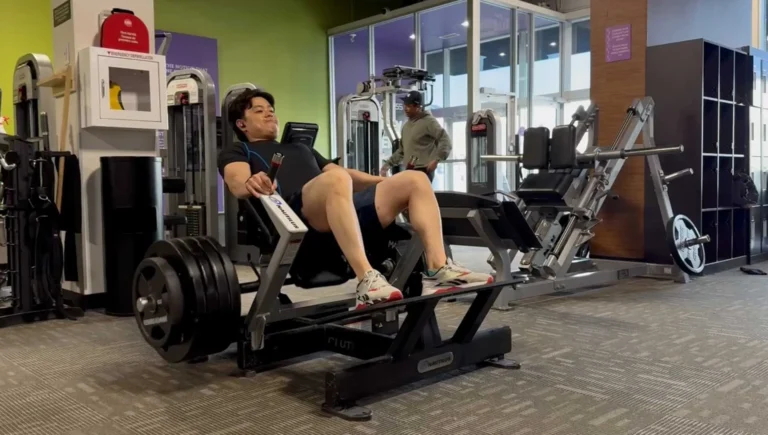You may not realize it, but incorporating regular physical activity into your daily routine can significantly enhance your overall health. Engaging in exercise helps you maintain a healthy weight, reduces your risk of chronic diseases such as heart disease and diabetes, and boosts your mental well-being by alleviating stress and anxiety. Moreover, staying active increases your energy levels and promotes better sleep, ultimately leading to a more productive and fulfilling life. Prioritizing your physical activity is vital for long-term health and vitality.
Key Takeaways:
- Regular physical activity enhances cardiovascular health and improves overall fitness levels.
- Engagement in physical exercise contributes to mental well-being by reducing stress, anxiety, and depression.
- Active lifestyles help in maintaining a healthy weight and reducing the risk of chronic diseases such as diabetes and hypertension.
The Role of Physical Activity in Overall Health
Engaging in regular physical activity enhances your overall health by improving various bodily functions and reducing the risk of chronic diseases. It boosts your cardiovascular system, strengthens muscles, and increases flexibility. Regular movement not only helps maintain a healthy weight but also lays a foundation for longevity. Participants in moderate or vigorous activities experience a substantial decrease in mortality rates, highlighting the significant impact of physical activity on lifespan.
Physical Benefits
Your body reaps numerous physical benefits from consistent physical activity. These include improved cardiovascular health, enhanced muscle strength, and better joint function. Engaging in activities like walking, running, or weight training boosts your metabolism and maintains healthy body composition, aiding in effective weight management. A mere 150 minutes of moderate exercise weekly significantly reduces the risk of heart disease and other chronic conditions.
Mental Health Benefits
Exercise profoundly impacts mental health, as it releases endorphins that cultivate feelings of happiness and well-being. Regular physical activity is linked to decreased symptoms of anxiety and depression, promoting a sense of calm and stability. It enables you to cope better with stress while enhancing cognitive functions, such as memory and attention span.
Scientific studies reveal that just 30 minutes of moderate exercise can elevate your mood and reduce feelings of stress. Activities like yoga and aerobic exercises promote mindfulness, which effectively boosts emotional stability. Over time, individuals who engage in regular exercise report fewer instances of depressive symptoms, fostering resilience against life’s challenges. The transformative impact on your mental health can be as profound as the physical benefits gained, creating a holistic approach to well-being.
Impact on Disease Prevention
Engaging in regular physical activity significantly lowers your risk for numerous chronic diseases. Studies show that individuals who maintain an active lifestyle are less likely to develop conditions such as type 2 diabetes, certain types of cancer, and metabolic syndrome. By incorporating exercise into your routine, you effectively create a buffer against these diseases, enhancing your overall quality of life and longevity.
Cardiovascular Health
Regular physical activity strengthens your heart and improves circulation, reducing the risk of heart disease. Engaging in aerobic exercises, such as the recommended 150 minutes per week, can lower blood pressure and improve cholesterol levels. Strengthening your cardiovascular system enhances your endurance and reduces strain on your heart over time.
Weight Management
Active individuals tend to have healthier body weights, which directly impacts overall health. Regular activity helps you burn calories, build muscle, and increase metabolism, making it easier to manage weight. Keeping your weight in a healthy range reduces the risk of obesity-related conditions and enhances your physical and mental well-being.
Weight management through physical activity isn’t just about burning calories; it also involves muscle preservation and metabolic efficiency. Resistance training, combined with aerobic exercises, increases your basal metabolic rate. This means that even at rest, your body is more efficient in burning calories. Additionally, studies indicate that active individuals have lower levels of visceral fat, the harmful fat linked to chronic health issues. By staying active, you take control of your weight and promote a healthier body composition, fostering long-term health benefits.
Enhancing Longevity
Lifespan and Quality of Life
Regular physical activity not only extends your lifespan but also enhances your overall quality of life. Engaging in moderate exercise, such as brisk walking or swimming, can add approximately 5 to 7 years to your life expectancy. Furthermore, it promotes independence, allowing you to perform daily activities with ease, maintain mental health, and reduce the incidence of age-related conditions like Alzheimer’s and dementia.
Active vs. Sedentary Lifestyle
Your lifestyle choices have a profound impact on your health and longevity. An active lifestyle reduces the risk of heart disease, diabetes, and certain cancers, whereas a sedentary lifestyle increases your susceptibility to these diseases. Studies indicate that individuals who sit for more than 6 hours a day face a significantly higher risk of premature death compared to those who engage in physical activity.
Engaging in a physically active lifestyle has been linked to numerous health benefits compared to a sedentary one. For example, research shows that adults who exercise regularly can cut their risk of cardiovascular disease by up to 50%. In contrast, sedentary behavior, characterized by prolonged sitting or inactivity, has been associated with metabolic disorders and reduced life expectancy. The contrast is stark; physically active individuals not only suffer fewer health problems but also enjoy a greater sense of well-being and vitality, demonstrating the profound effects of movement on your life.
Recommendations for Incorporating Physical Activity
Incorporating physical activity into your daily routine can be a seamless process. Aim for at least 150 minutes of moderate-intensity aerobic activity each week, such as walking or cycling. Include strength training at least twice a week to enhance muscle mass and bone density. Break activities into manageable sessions, whether it’s short walks or mini workout bursts during the day. Keeping it enjoyable and varied is key to maintaining consistency.
Guidelines for Different Age Groups
Physical activity recommendations vary by age group. For children and adolescents, at least 60 minutes of daily activity is suggested, emphasizing fun activities. Adults should target 150 minutes a week, while older adults are encouraged to stay active with balance and flexibility exercises. Tailoring these guidelines to match individual capabilities ensures safety and effectiveness in promoting health.
Types of Physical Activities
Engaging in diverse types of physical activities keeps your routine interesting and effective. Aerobic exercises, such as walking and running, enhance cardiovascular health, while strength activities like lifting weights improve muscle strength. Incorporating flexibility exercises, such as yoga, increases your range of motion. Balance activities are equally important, particularly for older adults, to prevent falls. Exploring various activities can help you discover what resonates best with your lifestyle.
| Activity Type | Examples |
| Aerobic | Running, swimming, cycling |
| Strength | Weightlifting, resistance bands |
| Flexibility | Yoga, stretching routines |
| Balance | Tai chi, yoga poses |
| Recreational | Dance, sports, hiking |
Incorporating various types of physical activities can significantly enhance your overall fitness. Aerobic exercises boost heart health, while strength training can prevent muscle loss as you age. Flexibility exercises improve your mobility, and balance activities are important for reducing the risk of falls. By integrating activities you enjoy, you’re more likely to stick with your routine long-term. Perceiving diversity in your fitness regimen fosters a deeper commitment to your health journey.
- Aerobic Activities: Running, cycling, swimming – vital for heart health.
- Strength Training: Weightlifting, resistance exercises – key for muscle retention.
- Flexibility Work: Stretching, yoga – enhances mobility and reduces injury risk.
- Balance Exercises: Tai chi, yoga poses – important for fall prevention.
- Recreational Activities: Sports, dance – fun methods to stay active.
| Activity Type | Benefits |
| Aerobic | Improves cardiovascular health and endurance |
| Strength | Increases muscle strength and metabolic rate |
| Flexibility | Enhances range of motion and reduces muscle tension |
| Balance | Prevents falls and improves coordination |
| Recreational | Promotes social engagement and mental wellbeing |
Overcoming Barriers to Regular Exercise
Physical activity may seem daunting due to various barriers, but understanding these obstacles can motivate you to push through. Common challenges often include time constraints, lack of motivation, limited access to facilities, and fear of injury. Identifying these hurdles helps you develop a personalized plan to incorporate exercise into your life, making it more manageable and enjoyable.
Common Obstacles
Many individuals face obstacles that hinder their ability to maintain a regular exercise routine. Time constraints due to work or family obligations can make it difficult to prioritize fitness. Motivation often wanes, especially without clear goals or progress tracking. Accessibility to gyms or safe outdoor spaces can further complicate matters. Additionally, fear of injury may deter you from trying new activities or pushing your limits.
Strategies for Success
To overcome these barriers, you can employ specific strategies that fit your lifestyle. Setting realistic goals, exploring home workouts, and scheduling exercise like any important appointment are effective methods. Building a support network can provide motivation and accountability, while gradually increasing intensity levels minimizes injury risks. Moreover, varying your exercise routine can keep things exciting and engaging.
Strategizing for success involves creating a holistic plan that integrates movement into your daily life seamlessly. Start by auditing your week to identify small windows for activity—whether it’s a brisk walk during lunch or a quick workout before dinner. Use technology to your advantage by tracking progress through apps, which can also encourage you with reminders and milestones. Engaging in group activities, either in person or virtually, enhances motivation, making exercise feel less like a chore. Finally, mixing different types of activities, from yoga to strength training, not only keeps your sessions fresh but also targets various muscle groups, enriching your overall fitness journey.
The Connection Between Physical Activity and Mental Well-being
Engaging in regular physical activity significantly enhances your mental health, transforming mood and reducing anxiety. Exercise triggers the release of endorphins, known as “feel-good” hormones, which can elevate your sense of happiness and well-being. Furthermore, consistent movement not only acts as a buffer against stress but also fosters resilience against mental health disorders, thereby promoting a more balanced and fulfilling life.
Stress Reduction
Physical activity serves as a powerful antidote to stress, allowing you to release pent-up tension and anxiety. Engaging in aerobic exercises like running, cycling, or swimming increases blood circulation and leads to a decrease in stress hormones such as cortisol. This process leaves you feeling more relaxed and at ease, contributing to overall emotional stability.
Cognitive Function and Mood
Regular exercise enhances cognitive function by boosting blood flow to your brain, facilitating growth factors that are vital for neuron health. Studies show that just 30 minutes of moderate exercise can lead to noticeable improvements in mood, creativity, and overall cognitive performance. This connection between physical activity and mental acuity highlights the profound impact that staying active has on your mental clarity and emotional resilience.
Engaging in physical activity directly translates to noticeable improvements in cognitive performance and mood stability. For instance, individuals who incorporate regular workouts into their routines report better focus, sharper memory, and increased problem-solving abilities. Research has shown that aerobic exercises enhance the production of neurotrophic factors, which support cognitive development and can even lead to long-term benefits such as reduced risk of cognitive decline. Regularly moving your body not only keeps you fit but also promotes mental sharpness, helping you navigate your daily challenges with greater ease and effectiveness.
To wrap up
The benefits of physical activity for your health are extensive, impacting both your body and mind. Engaging in regular exercise helps maintain a healthy weight, strengthens your heart, and improves your mood. By incorporating physical activity into your routine, you enhance your overall well-being, boost your energy levels, and reduce the risk of chronic diseases. Prioritizing movement helps you cultivate a healthier lifestyle that supports longevity and vitality.
FAQ
Q: Why is physical activity important for mental health?
A: Physical activity can reduce symptoms of anxiety and depression, improve mood, and enhance cognitive function by releasing endorphins and promoting better sleep quality.
Q: How does regular exercise impact cardiovascular health?
A: Regular physical activity strengthens the heart, improves circulation, lowers blood pressure, and helps maintain healthy cholesterol levels, reducing the risk of heart disease.
Q: What role does physical activity play in weight management?
A: Engaging in physical activity helps burn calories, build muscle mass, and boost metabolism, making it easier to maintain or achieve a healthy weight.
















































